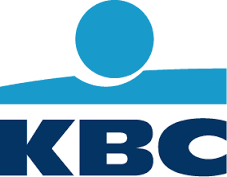Webinar: “China’s 14th Five-Year Plan and what it means for EU businesses” – 29 April 2021
May-04-2021 By : fcccadmin
The Flanders-China Chamber of Commerce organized a webinar on ‘China’s 14th Five-Year Plan and what it means for EU businesses’ on 29 April 2021.
Ms Gwenn Sonck, Executive Director of the Flanders-China Chamber of Commerce, welcomed the participants, and introduced the speaker, Mrs. Iris Pang, Chief Economist, Greater China, ING Bank. She joined ING in 2017 and is often interviewed by the media. Before joining ING she held a similar position at Natixis and OCBC Wing Hang Bank. She holds a PhD in Economics from the Hong Kong University of Science & Technology, a Masters in Commerce from the University of Oakland and a Bachelor in Economics from the University of New South Wales. Mrs. Pang will share her insights on the impact of the 14th Five-Year Plan on China’s economy and the likely consequences for China’s relationship with Europe. In 2020, China became the EU’s biggest trading partner overtaking the U.S. Foreign investment in China has increased by 6.3%. China overtook the U.S., regaining the title of the world’s top destination for FDI and will also be one of the main drivers of the world’s growth this year. More business opportunities will also arise after ratification of the Comprehensive Agreement on Investment. It is the most ambitious agreement that China has ever concluded. It will offer broader market access and a better business environment for investors in Europe and in China. European companies active in manufacturing will see new business opportunities. There will also be more opening up in the services sector.
Mrs. Iris Pang, speaking from Hong Kong, said that the 14th Five-Year Plan can be summarized in three important points:
Technology means that China addresses the threat of not having enough technology imports from the U.S. and its allies. They need to build their own self-reliant technology, which does not mean the top-notch technology, but more advanced than can be done at the moment, which is a normal ordinary level by world standards. They know they are lagging behind and can’t import all the technology they need so they have to be self-reliant, which is not easy for China because they need to import talent as growing their own talent takes time. They also need raw materials. A few months ago imports of silicon increased multiple times month-on-month. Silicon is used in the production of chips and needs a lot of imports. Selling technology is also difficult as foreign companies that have a footprint in the U.S. cannot sell technology to Chinese companies on the U.S. list for export control. China is facing difficulties to sell its technology to the world.
Green: The target to reach the carbon peak by 2030 and become carbon neutral by 2060 means China needs a lot of green products and technology. China is not very late in developing green equipment. It has quite advanced water and solid waste management systems, for example to recycle masks and PPE uniforms. “Green” can hopefully become a window between China and Europe and the U.S. Also in the green sector China needs technology which also depends on globalization and cooperation with the rest of the world. There are a lot of opportunities as many sectors are included in “green”. Europe can help China become greener.
The widening wealth gap is also addressed in the 14th Five-Year Plan. The wealthy class has benefited from Covid. They have resources and cash to increase their investments and therefore the wealth gap has increased. One way to reduce it is to enhance the healthcare system. Migrants are going to be able to enjoy health care services in cities, which in the past they could not due to the household registration system. There will be opportunities for European companies in the upgrading of public hospitals and there will be a breakthrough in education.
The government announced economic targets in the work report at the two sessions. The GDP growth target is set above 6% but the range is now between 8% and 10% because of the low base effect from 2020. China is really energetic in terms of growth. The country is scaling back fiscal stimulants because it has generally recovered from Covid-19. Compared to 2020, China does not need a very big fiscal stimulus in 2021. The 14th FYP shows a slowing down from the 13th one. The Chinese government is not looking for very fast growth, nor a lot of stimulus and relaxation for the coming five years. The focus is more on tackling challenges. The surveyed urban jobless rate will be 5.5% with 11 million jobs added. Keep in mind that every year 7 million students graduate, so the remaining 4 million is not much. Migrant workers’ wages are still growing but they experience it as a wage cut as it is lower than the 8% to 12% it used to be. An expected increase of 5% is not particularly attractive for migrant workers. We don’t need to worry about inflation in China. There will be tax reductions and an increase in R&D expenses by the government of 10.6%. There are many anti-monopoly regulations on fintech. The government doesn’t want to kill them but wants to show the world that it is on the same level with global regulations.
The relationship between China and the U.S. has worsened. It is wrong to assume that this has nothing to do with Europe. Following the Alaska meeting between China and the U.S., the EU imposed sanctions on China and China reacted with its own sanctions on the EU, which means the China-U.S. meeting had a political impact beyond the two economies. The EU is standing by the U.S. to fight on some China issues. Doing business with China, you need to be careful not to step on China or the U.S.
The China-EU Comprehensive Agreement on Investment (CAI) is not yet in effect. Many people celebrated when Merkel and Xi signed off on the agreement, but it has to be passed by every EU country and by the European Parliament. This will not happen this year, maybe next year, but it remains uncertain. China overtook the U.S. in 2020 as the EU’s biggest trading partner. The U.S. international trade dropped 10% in 2020, but trade with China increased 4.5%, while China’s exports to the EU increased 5.6% and China’s imports from the EU 2.2%. Both sides did more trade with each other even during Covid, because of medical equipment and supplies.
China is a big market but there are risks too. If you are doing business with China you need to be very careful, for example in speaking out about Xinjiang cotton. Think twice. Mrs Pang said that even being close to China, she didn’t know if there are labor camps in Xinjiang as she hasn’t visited for several years. But without information it is impossible to comment on it and it is best not to jump to conclusions. On the technology war it is difficult for Europe not to stand by the U.S. because many governments are worried about the growth of China’s economic and military power. Make sure you know the politics well before making a decision. In the coming five years you will face many difficult questions. You need to have somebody studying international politics consistently. Covid will continue to make international travel very difficult. Some European brands have started to sell their products on China’s online shopping platforms.
Volatility is the key theme for the yuan in 2021. The high-low range of the USD versus the yuan increased from 7% in 2019 to 9% in 2020 and there will be even more volatility this year with three terms of appreciation and depreciation expected. Be very careful if you open yuan positions and think about hedging because you may need it.
Which sectors are preferred in the China market? Promising sectors are 5G, infrastructure projects and big data centers. Domestic demand is a stable sector. Issues Mrs Pang warned about are anti-monopoly, the technology war and local government debt. Property developers are deleveraging but the Chinese government is not going to squeeze them to death. However, property developers have weak cash flows and need to divest a lot. The major assumption is that there will be no major comeback of Covid in China. The forecast for China’s real year-on-year GDP growth in 2021 is 8.6%. No changes in monetary policy are expected.
During the Q&A session, Jochum Haakma, Chairman of the EUCBA, asked how non-ratification of the CAI by all member countries would impact investment opportunities? Mrs Pang: You can’t rely on the international platform to grow your business. You have to rely on your own company.
Are rising housing prices part of inflation? Mrs Pang: No, asset inflation is always there in a growing economy. It is built in in emerging markets. Inflation does not come from investments, but from the real economic side, such as wage increases to retain your staff. The risks for China are the technology war and export demand. Wage growth and inflation will be limited this year.
Is there a plan about strategic research domains? Mrs Pang: The roadmap on technology innovation 2030 is available on this website: https://www.sciping.com/
If the CAI is ratified, will it be followed by a free trade agreement? Mrs Pang: This will probably take a long time. The FTA is even more difficult than the CAI. How can you talk about a trade agreement with a technology war going on, with export controls and sanctions?
Will non-Chinese companies be eligible for tax reductions for research-driven companies? Mrs Pang: Yes, if you have R&D projects in China, you can apply for tax reduction.
Could the technology war result in different standards? Mrs Pang: This idea comes from companies like Apple, Google and Huawei, and China having different operating systems. Almost all Chinese tech companies are private and they know the importance of the network effect. If more people use system A then it will be the system for the general public. Many companies want their system to be system A, but it won’t happen if they are not the biggest player. Ultimately there will be one or two operating systems that survive. China will not use this to limit imports, it actually wants to import more. They don’t mind if there system is system A, they want to buy and sell technology.
When is the RMB likely to become fully convertible? Mrs Pang: The RMB joining the IMF’s special drawing rights was the start of convertibility. It is now going through a very slow stage, but things are changing. China and Russia and other countries have more transactions in RMB. But if I am a European company, I would want China to use the euro so that they take the risk.
Does the 14th Five-Year Plan points to a more centralized approach or is there still a strong impact from the provinces? Mrs Pang: There are still locally-based policies, but the concept is driven by the central government. The green policy is dictated by the central government but each province will have its own set of policies approved by the central government. You will face a lot of different policies if you have factories in different locations.
Number of imported Covid-19 cases rising but aviation restrictions to be eased
By : fcccadmin
With the number of infections still rising in many parts of the world, China is under rising pressure to guard against imported Covid-19 cases and domestic outbreaks. China has registered 364 confirmed imported Covid-19 cases since the beginning of April, an average daily increase of more than 20% over the previous month, Mi Feng, Spokesperson with the National Health Commission (NHC), said. Mi also alerted the public to the long-term, complex and uncertain nature of epidemic prevention and control. The number of new Covid-19 cases globally reached more than 5.75 million in the past week, of which more than 40% were in countries that have a land border with China, with several countries experiencing explosive surges. Amid strengthened quarantine measures for inbound travelers, at least two kinds of reagents should be used for nucleic acid tests on the 14th day after their entry into China, said NHC official Wang Bin, adding that the tests should be carried out by different testing institutions to improve accuracy.
China requires people entering the country to undergo a 14-day quarantine and medical observation before continuing another seven-day health observation at home. They should take nucleic acid tests on the day after the quarantine has been lifted, and again on the seventh day,
China’s aviation regulator will slightly relax rules to suspend international flights if too many Covid-19 carriers are onboard. Airlines can now choose to cap the load factor on a flight, or the percentage of seats filled, to no more than 40% for four weeks if more than five but less than 10 passengers on a previous flight test positive for Covid-19 after arriving in China, the Civil Aviation Administration of China (CAAC) said. Previously, such flights would have to be suspended for two weeks. The new rules came into effect on May 1, CAAC added. China has drastically cut international flights since March last year. A “Five One” policy allows mainland carriers to fly just one flight a week on one route to any country and foreign airlines to operate just one flight a week to China. But as the coronavirus situation in China is gradually brought under control, it has allowed more foreign airlines to resume services to China.
Delta Air Lines increased seating capacity on flights between Shanghai and the United States from May 1. The Atlanta-based carrier will reopen middle seats to passengers on all flights between China and the U.S., which will increase capacity by nearly 20%. Middle seats have been blocked to reduce contact between passengers since the coronavirus outbreak. However, the carrier is still capping capacity on flights to China at 75% to abide by CAAC regulations. Delta also resumed service between Shanghai and Seattle, and is also operating four weekly flights between Shanghai and Detroit via Seoul. Passengers will not be required to disembark during the stopover in Seoul. Currently, most people traveling between the U.S. and China are students studying abroad. In addition to Delta, United Airlines is operating four weekly passenger flights between San Francisco and Shanghai. Chinese carriers, including Air China, China Eastern, China Southern and Xiamen Air, are operating flights between Beijing, Shanghai, Guangzhou and Xiamen and Los Angeles and New York.
The U.S. announced it would ease restrictions on Chinese and other foreign students to enter the U.S. this fall. Around 372,000 Chinese accounted for 35% of international students in the U.S. in the 2019-20 academic year. However, most students would not be able to obtain visas in time due to the huge backlog. Following the U.S. announcement, both fares and demand for China-U.S. air routes surged five-fold in just one day, according to Chinese online travel platform Qunar. A customer service representative from Trip.com said that all direct flights from Beijing and Shanghai to New York during July and August have sold out and the remaining ones are mainly transfer flights via Hong Kong.
The World Health Organization (WHO) is expected to soon give emergency approval for China’s two main Covid-19 vaccines. One of the vaccines is made by state-owned Sinopharm and the other by the private company Sinovac Biotech. China has already injected millions of doses of both vaccines at home and has exported them to many countries, particularly in Latin America, Asia and Africa. An emergency listing from the WHO is an indication to national regulators of a shot’s safety and efficacy, and would allow the Chinese vaccines to be included in COVAX, the global program to provide vaccines mainly to poor countries. So far, the WHO has given emergency approval to vaccines from Pfizer-BioNTech, Oxford-AstraZeneca, Johnson & Johnson and Moderna.
The Chinese government also announced the establishment of a new central-level agency – the National Administration of Disease Prevention and Control, and appointed Wang Hesheng, Vice Minister of the National Health Commission (NHC) as Director-General of the new agency.
This overview is based on reporting by the China Daily, Shanghai Daily and Global Times.
All provincial-level areas in China report double-digit GDP growth in Q1
By : fcccadmin
All of China’s provincial-level areas, except the Tibet Autonomous Region, which has yet to report its figures, recorded double-digit GDP growth of more than 12% in the first quarter. The robust growth rates across the country further underscored a full-fledged recovery of the Chinese economy from the Covid-19 pandemic, with most industries returning to or exceeding pre-pandemic levels. However, the growth pace may slow to normal levels in the second half of the year, an economist warned. Among the 30 provinces, autonomous regions and municipalities that have released their growth figures, eight provinces recorded growth above the national average of 18.3%, led by Hubei province, the province hit hardest by the Covid-19 virus in 2020. Hubei’s GDP grew 58.3% in the quarter. Tibet is also expected to post double-digit growth.
Based on a two-year average, Hainan province was first with a 7% growth, driven by new services and retail sectors. Hainan was followed by Guizhou, Jiangxi and Jiangsu provinces. The double-digit growth rates are mostly due to an extremely low base last year, according to Tian Yun, Vice Director of the Beijing Economic Operation Association. With the effective containment of the pandemic, conditions in many industries, including manufacturing, retail and catering, have returned to levels that are near to or exceed pre-pandemic figures. “In the first quarter, there was a fast recovery not only on the supply side, but also in domestic demand, driving up manufacturing as well as retail and catering,” Tian said.
In Guangdong, the contribution of whole-sale, retail, lodging and catering to local GDP growth rose by 51.3% compared to last year. Foreign trade in several provinces drove accelerated economic growth in the first quarter. In Hubei, foreign trade surged 88.1% to CNY117.46 billion. Shandong’s foreign trade grew by almost 39%, and Guangdong’s bonded imports and exports grew by 27.8%. However, Tian warned that growth might peak in the first half of this year and then gradually slow from the third quarter, as domestic and overseas demand stabilizes, the Global Times reports.
Wu Chaoming, Chief Economist at Chasing Securities, however added that northern and northeastern provinces have been lagging in their recovery as their economies are heavily reliant on traditional industries, leaving them in an inferior position in the ongoing recovery led by high-tech industries. “The export-driven recovery in industrial output has been a key pillar of China’s economic recovery since the second quarter of last year. This is partly why coastal provinces like Guangdong, Jiangsu and Zhejiang are doing better than the nationwide level in spite of their large economic scale,” Wu added. Guangdong had the largest economic scale of all regions in the first quarter with CNY2.71 trillion worth of gross regional output, up 18.6% year-on-year. The gross regional output of seven other provinces – Jiangsu, Shandong, Zhejiang, Henan, Sichuan, Fujian and Hunan – also exceeded CNY1 trillion in the first quarter.
Profits of China’s major industrial firms maintained fast expansion in the first quarter this year as the Chinese economy continued its recovery and enterprises’ production and sales further restored growth. Industrial firms with an annual business turnover of at least CNY20 million raked in CNY1.83 trillion in combined profits during the first three months, surging 137% year-on-year, according to the National Bureau of Statistics (NBS). The figure rose 50.2% compared with the same period in 2019. The fast expansion also put average first-quarter growth for 2020 and 2021 at 22.6% compared to the 2019 level. In March alone, profits of major industrial firms jumped 92.3% year-on-year to CNY711.18 billion. Previous data showed that China’s value-added industrial output went up 24.5% year-on-year in the first quarter, laying a sound foundation for the improvement of enterprises’ profitability. Profits in almost all industrial sectors increased during the period compared to a year ago, with nearly 40% of sectors doubling their profits. A total of 30 industrial sectors logged increases in profits compared with the first quarter of 2019. Auto manufacturing profits skyrocketed 843%, and profits from computer, communication and electronic equipment manufacturing rose by 141%.
China’s use of foreign capital rose by 43.8% year-on-year to USD44.86 billion in the first quarter of this year, according to the Ministry of Commerce (MOFCOM).
This overview is based on reporting by the China Daily, Shanghai Daily and Global Times.
Digital yuan used for wage payments for the first time
By : fcccadmin
The application of China’s Digital Currency Electronic Payment (DC/EP), also known as digital yuan, is taking another critical step forward in the business-to-business (B2B) segment and for wage payments. JD.com, the country’s second-largest online retailer, showed for the first time how it uses digital yuan for its payroll, as well as pilot applications and digital solutions for corporate payments for its supply chain partners, during the fourth Digital China Summit in Fuzhou, Fujian province. In January, JD.com tested the use of digital yuan to pay some of its employees in cities like Shanghai, Shenzhen and Chengdu. Employees can deposit their digital salaries in their personal bank cards, and can use the money where the digital currency is accepted in pilot cities. Peng Fei, head of the DC/EP program at JD Digits, JD.com’s fintech arm, told the Global Times that “many of our digital yuan pilot projects are at the consumer level, and now we are starting to pay attention to where the money comes from. Paying salaries is a good way to source digital yuan.” Peng said that the scenarios and applications of the digital yuan for businesses will be even more numerous in the future.
JD.com was the country’s first online platform to accept China’s digital currency, after the Suzhou municipal government in Jiangsu province handed out 100,000 virtual red packets of CNY20 million in total to local residents via a lottery, in order to encourage spending during the Double Twelve online shopping festival last year. Leading Chinese technology companies such as Huawei and Tencent also exhibited their advances in the digital currency area during the Fuzhou summit, attracting many visitors who were eager to test out the new currency. Chinese fintech giants Ant Group and Tencent announced further cooperation with China’s central bank to move forward with the digital yuan, vowing to provide active support to the rollout of the currency. According to Ant Group, which is under strict regulatory scrutiny over some of its business practices, the company will support the research and development of the digital yuan and its technical platform, while Tencent said that it has provided full support to the digital yuan pilot project, and will carry out controlled trials under the instructions of the People’s Bank of China (PBOC). “Currently, there’s no plan to launch the digital yuan nationwide. But the scale of the trial runs will be increased,” said PBOC Deputy Governor Li Bo, at the Boao Forum for Asia held in Hainan province on April 18.
The scope of the use of the digital yuan will be further expanded during this year’s May 5 Shopping Festival, with digital yuan red envelopes, or consumption coupons. Suzhou and Shanghai will give out red envelopes to consumers during the upcoming shopping festival. At present, six banks that will run trial digital yuan have connected with merchants and will together launch promotional activities. Nearly 50 Carrefour stores in Shanghai, Suzhou and other neighboring cities will fully launch the digital yuan payment trial during the second May 5 Shopping Festival. Unlike Alipay and WeChat wallet, the digital yuan can be used without internet access.
In Shanghai the digital yuan is now on trial at selected spots, including groceries, vending machines, fresh food markets, department stores and shopping malls. To make an e-yuan payment, people need an account with any of six state-run banks and request an e-yuan wallet smartphone app. Users can simply swipe up to pay or swipe down to receive payments. If the two parties both have e-yuan accounts, a payment can be made via the app, and the only information you need to fill in is the recipient’s mobile number or e-yuan wallet number. At merchants supporting e-yuan payment, consumers can also use the “tap-to-pay” service. This allows users to make digital yuan payments without the Internet, with the help of NFC technology, the Shanghai Daily reports.
The renminbi yuan strengthened its position as a global settlement currency last year, with a growing number of overseas financial institutions willing to increase their Chinese currency denominated assets, according to a new survey by the Bank of China (BOC), based on responses from 3,286 enterprises, 76% of them domestic companies. The remaining 24% were overseas businesses from 32 countries and regions. Cross-border renminbi settlements exceeded CNY28 trillion last year, up by 44% from a year earlier. About 79% of domestic and overseas enterprises who participated in the survey said they would consider using the yuan for cross-border transactions or were willing to increase the proportion of the Chinese currency used in such transactions. About 31% of domestic respondents said last year their overseas trading partners fully accepted using renminbi as a settlement currency, up 4 percentage points from 2019. The survey also found that the level of the renminbi used in China’s outbound direct investments (ODI) rose significantly, as 51% of domestic businesses said the use of the renminbi in ODI accounted for no less than 20% of the total last year, whereas only 38% of domestic business enterprises said so in 2019, the China Daily reports.
China’s environmental goals create opportunities for European companies
By : fcccadmin
China’s environmental goals will create growth opportunities for European companies, some of which have decades of experience in the field, Joerg Wuttke, President of the European Union Chamber of Commerce in China, said. China’s development during the 14th Five Year Plan period (2021-25) will certainly make it a larger, more sophisticated economy, with very demanding customers and focused more on qualitative, rather than quantitative growth. There will also be an added emphasis on environmental protection, he said. Wuttke’s comments come at a time when China is aiming to peak carbon dioxide emissions by 2030 and achieve carbon neutrality by 2060. “At the same time, Europe is a continent which is high-tech and which has a lot of very efficient small and medium-sized enterprises. I hope that Chinese business finds more opportunities to buy into this,” he said, adding “we need investment on both sides in order to get the economies closer.”
Economic ties between Europe and China have been “dense and successful,” Wuttke said. China has become the biggest trade partner of the European Union, while the EU is China’s second-largest trade partner. The China-EU Comprehensive Agreement on Investment (CAI), negotiations for which were finished in December, is yet to be put into effect. Still, Wuttke hopes that steps would be taken to provide greater access for European firms in sectors such as new energy vehicles and healthcare in China. The Chamber is trying to organize a conference on sports, including a visit to Beijing 2022 Winter Olympic Games venues, later this year to show the business side and the health implications of sports, Wuttke said.
Meanwhile, the Chamber has closely followed developments in the Guangdong-Hong Kong-Macao Greater Bay Area, where the gross domestic product is expected to reach about USD4.6 trillion in 2030, said Klaus Zenkel, Chairman of the Chamber’s South China Chapter. “I think there is potential and very good opportunities for foreign investment in this area and in new technologies. For example, Shenzhen in Guangdong province, is a melting pot of talent with big diversity. Such diversity is crying for innovation, the China Daily reports.
- KURT VANDEPUTTE (UMICORE) APPOINTED CHAIRMAN OF THE BOARD OF THE FLANDERS-CHINA CHAMBER OF COMMERCE (FCCC)
- Webinar: “Knowing Your Chinese Partner” – May 26, 2021, 10 am – 12 am
- EMA starts rolling review of CoronaVac, WHO approves Sinopharm vaccine for emergency use
- The Global Times warns not to politicize the Comprehensive Agreement on Investment (CAI)
- Hainan to become biggest duty-free market in the world


































